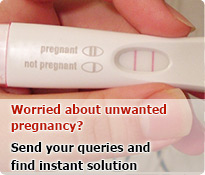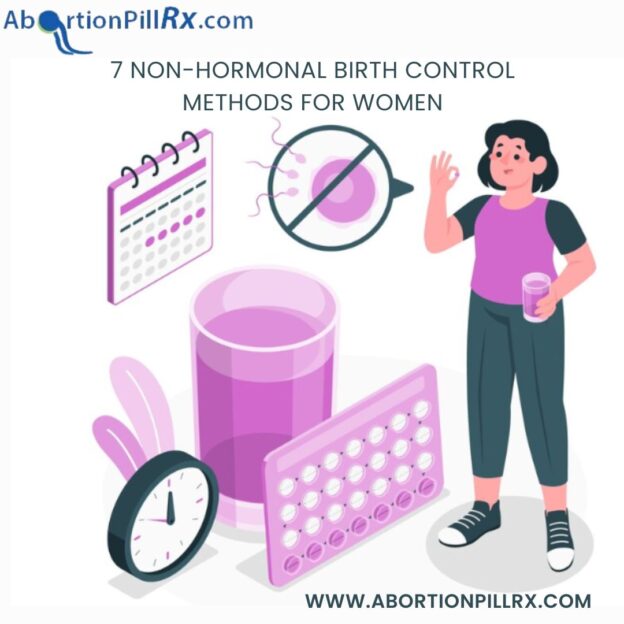In recent years, birth control has taken center stage for the betterment of women’s reproductive health. The landscape of birth control has significantly expanded beyond traditional hormonal methods. With the availability of hormone-free contraception options, it’s been made easier for women to take care of their reproductive health.
Individuals who have hormonal issues, health concerns, or personal choices can prefer non-hormonal birth control methods. There are several options available for birth control that are not hormonal.
Hormonal birth control or non-hormonal birth control methods help prevent pregnancies. It is important to understand that each person’s body is unique, and what works for one person may not work for another. That is why speaking with a healthcare expert is essential.
If you want to know what the non-hormonal birth control methods are, read this complete blog post and get detailed information on these methods, their effectiveness, benefits, and considerations.
What are non-hormonal birth control methods?
Nonhormonal birth control refers to any method that does not affect a woman’s hormones. Condoms are a popular type, but there are many others. However, hormonal birth control is not the best option for everyone.
Due to medical conditions like heart illness or a phase in life like the first few weeks after having a child, some people are unable to use certain birth control methods. Certain individuals may wish to refrain from using hormonal birth control for private reasons.
Why does one choose non-hormonal birth control methods?
Options for Male Birth Control Hormonal contraceptives alter a woman’s hormone levels to prevent conception, such as the birth control pill and hormonal implants. They might be dependable and convenient. However, some people may find them to be unsuitable for various reasons, such as:
- The pill must be taken at the same time each day, which you must remember.
- To have the device implanted, or put in, you must visit a physician.
- They do not prevent STDs (sexually transmitted diseases).
- They may increase your risk of developing blood clots or breast cancer, as well as cause mood fluctuations and weight gain.
- You may not have sex frequently enough to require continued birth control.
- If you are nursing, you may be passing hormones to your infant.
Hence, many people choose to go with hormone-free contraception options that don’t interfere with their hormones.
7 Non-hormonal birth control methods
- Barrier Methods: Barrier methods stop sperm from getting inside the uterus. These methods are only used during sexual activity, and each time someone has sex, they should apply them correctly.
While certain barrier methods are available without a prescription from a medical provider, others can only be bought over the counter. This method includes male and female condoms.
- Diaphragm: The diaphragm is a tiny, flexible silicone cup. To cover the cervix, a person inserts the diaphragm into their vagina. It has an effectiveness rate of 83%, which implies that 17 out of 100 people will still get pregnant using a diaphragm.
Spermicide should be used in conjunction with diaphragms. Before implantation, it can be administered to the diaphragm and the surrounding areas.
- Cervical Cap: The cervical cap is a tiny silicone cup that covers the cervix and is inserted into the vagina. Similar to a diaphragm, but smaller in size. It is available in three sizes and the FemCap brand is the only cervical cap that may be purchased in the United States.
About 20% of the women who use it will become pregnant within a year, or 20 out of every 100.
- Spermicides: Before engaging in sexual activity, spermicides are inserted into the vagina to prevent sperm from entering the uterus. They come in suppositories, gels, and cream forms. Spermicide on its alone has around a 28% failure rate. It can be used to increase the effectiveness of other contraceptives, such as diaphragms and condoms.
- Copper IUD: This T-shaped piece of plastic is a nonhormonal intrauterine device. It goes into your uterus. It’s coated with copper, which is harmful to sperm and prevents them from traveling through the vagina to reach the fertilized egg. Otherwise, it keeps the fertilized egg from attaching to your womb.
- Vaginal Gel: You apply this gel on your vagina with an applicator before having sex. It prevents the pH level in the vagina from rising, allowing sperm to go to the reproductive canal and reach the egg. It is considered 86% effective. You can use it with condoms, diaphragms, or other contraceptives to increase their efficacy.
- Sterilization: Sterilization procedures are of two types. In the first, known as tubal ligation, a woman’s fallopian tubes are blocked to stop an egg from entering her uterus. The second, known as a vasectomy, involves sealing the tubes that extract sperm from a man’s testicles. These methods are 100% effective in preventing pregnancy.



